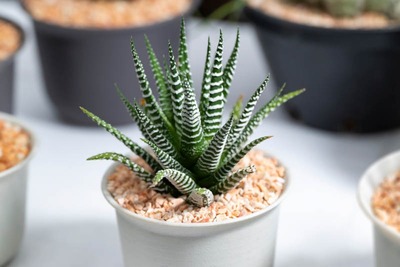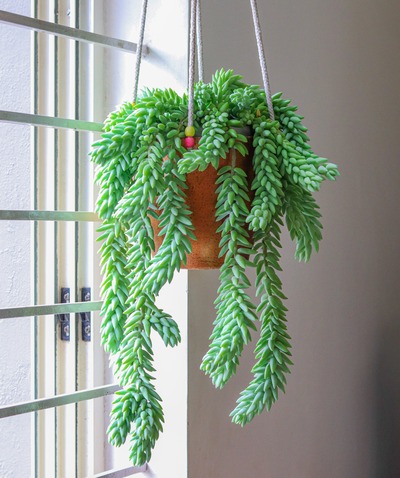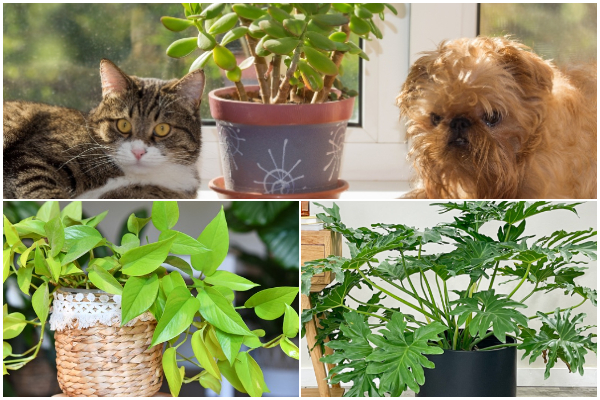Succulents are an excellent choice for indoor plants. They’re low-maintenance, come in a variety of stunning shapes and colors, and can thrive in most home environments. Whether you’re looking to brighten up a shelf, add greenery to your windowsill, or create a succulent arrangement, here are nine beautiful succulents that make ideal indoor plants.
1. Echeveria
Echeverias are prized for their symmetrical, rose-like shapes and are available in a dazzling range of colors, from soft blues and greens to deep purples and vibrant pinks. This succulent’s compact form makes it ideal for desks, windowsills, or small shelves, adding a touch of elegance to any space.
With its beautiful color variations and compact size, Echeveria brings a vibrant yet soothing look to any room.
- Care Tips: Echeverias prefer bright, indirect sunlight, so a sunny windowsill is ideal. Be cautious with watering; allow the soil to dry out completely before adding more water. Too much moisture can lead to root rot, so using well-draining soil is essential.
2. Jade Plant
The jade plant is a classic indoor succulent with thick, glossy, oval-shaped leaves that grow in clusters. Over time, it can develop into a small tree-like plant, making it an impressive feature in any room.
Known for symbolizing luck and prosperity, the jade plant adds positive energy to any room, making it a popular choice for both homes and offices.
- Care Tips: Place jade plants in bright, indirect light and water only when the top inch of soil feels dry. They don’t need frequent watering and can even tolerate occasional neglect.
3. Aloe Vera
Beyond its attractive appearance, aloe vera is loved for its soothing, healing gel, often used to treat minor burns and skin irritations. The plant’s spiky, green leaves grow upward in a rosette, giving it a striking and sculptural look.
Aloe vera is both functional and decorative, and its medicinal benefits make it a must-have for plant enthusiasts and beginners alike.
- Care Tips: Aloe vera prefers bright, indirect sunlight and minimal watering. Keep the soil well-drained, and allow it to dry out between waterings.
4. Zebra Plant
The zebra plant, with its unique white-striped, dark green leaves, resembles a miniature cactus and brings a touch of the exotic to indoor settings. This succulent’s compact size makes it perfect for adding a hint of greenery to tight spaces.
With its striking patterns, the zebra plant is an eye-catching yet easy-care succulent that can brighten up any room, from bathrooms to desks.
- Care Tips: Zebra plants thrive in low to bright indirect light, which makes them suitable for almost any room. They don’t require much water; simply water sparingly and ensure good drainage.
5. String of Pearls
For those who love cascading plants, the string of pearls is an enchanting option. Its delicate, bead-like leaves cascade down gracefully, making it an ideal choice for hanging planters or high shelves where its vines can grow freely.
The string of pearls adds a whimsical, trailing look to any space, adding dimension and texture, whether hung by a window or placed on a high shelf.
- Care Tips: Provide bright, indirect sunlight and avoid overwatering. The string of pearls is sensitive to waterlogged soil, so use a cactus mix and let it dry out between waterings.
6. Panda Plant
This succulent gets its nickname from its furry, silvery-green leaves edged in brown, resembling panda paws. Its unique look and soft, velvety texture add a touch of character and charm.
The panda plant’s soft texture and adorable “panda paw” appearance make it a favorite among succulent enthusiasts. Its compact size and low water needs are perfect for indoor growing.
- Care Tips: Panda plants thrive in bright, indirect light and require only occasional watering. Let the soil dry out fully before watering again.
7. Burro’s Tail
With its cascading stems covered in thick, teardrop-shaped leaves, Burro’s tail is a show-stopping succulent that’s perfect for high shelves or hanging baskets. Its lush, trailing appearance is perfect for creating an indoor jungle vibe.
This succulent’s trailing, lush look makes it a standout choice for indoor gardens, adding volume and life to spaces that need a bit of green drama.
- Care Tips: Burro’s tail enjoys bright, indirect sunlight and should be watered sparingly. Avoid moving it too much, as the leaves can be fragile and may fall off.
8. Snake Plant
Snake plants, with their upright, sword-like leaves, are versatile succulents that can tolerate low to bright light, making them one of the most adaptable houseplants. They’re also known for their air-purifying qualities, making them both decorative and functional.
Snake plants are incredibly resilient and stylish, making them a top choice for busy plant owners looking to enhance indoor air quality with minimal upkeep.
- Care Tips: Water sparingly and ensure the soil drains well, as snake plants are prone to root rot if left in overly wet soil. They thrive with minimal care and can tolerate lower light levels than many succulents.
9. Lithops
Lithops, often called “living stones,” are among the most unique-looking succulents, as they closely resemble small pebbles. These miniature succulents blend well with natural decor and add a touch of whimsy to any indoor garden.
Lithops are perfect for those who appreciate unusual, low-maintenance plants. They’re a fun, compact choice for small pots and add a quirky yet natural look to indoor spaces.
- Care Tips: Lithops require bright light and very minimal watering, especially in winter. They do best in well-draining soil and need little water, as they store moisture in their thick leaves.
Essential Care Tips for Growing Succulents Indoors
- Light Requirements: Most succulents do best in bright, indirect sunlight. Position them near a window that gets ample light, but avoid direct sun exposure, as it may scorch the leaves.
- Watering: Succulents are drought-tolerant and should be watered only when their soil is completely dry. Overwatering is one of the most common mistakes, so make sure to use pots with drainage holes and let excess water escape.
- Temperature and Humidity: Most indoor succulents prefer temperatures between 60-80°F and do well in low to moderate humidity. Keep them away from drafts and avoid placing them near heating vents.
- Choosing the Right Soil and Pots: Use a well-draining succulent or cactus soil mix, and choose pots with drainage holes to prevent water from pooling at the bottom, which could lead to root rot.


















Leave A Comment